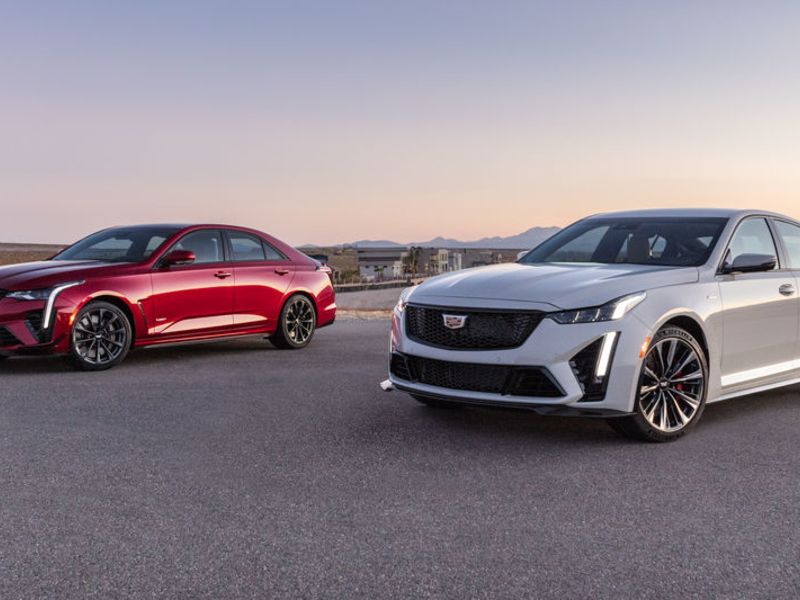
DETROIT — Even without the high-performance Blackwing engine that powered the defunct Cadillac CT6, the 2022 CT5 V-Series Blackwing is the most powerful vehicle the luxury brand has ever built, Cadillac says.
“Everything new and unique on these vehicles was only included if it served a functional purpose, while simultaneously creating a powerful signature look,” Andrew Smith, executive director of global Cadillac design, said in a statement.
The track-capable CT4-V Blackwing and CT5-V Blackwing, which Cadillac revealed virtually late Monday, come standard with a manual six-speed transmission but also offer a 10-speed automatic transmission.
Cadillac planned to begin taking reservations for 500 vehicles after the reveal, with deliveries happening late this summer. Pricing starts at $59,990 for the CT4-V Blackwing and $84,990 for the CT5-V Blackwing including shipping.
The CT5-V Blackwing has a 6.2-liter supercharged 668-hp V-8 engine with 659 pound-feet of torque. General Motors estimates that its top track speed is over 200 mph, and it can go from 0 to 60 mph in 3.7 seconds using the automatic transmission.
The CT4-V Blackwing has a 3.6-liter 472 hp twin-turbo V-6 with 445 pound-feet of torque. GM estimates the top speed at 189 mph and says it can go from 0 to 60 mph in 3.8 seconds using the automatic transmission.
Each engine is built by hand in Bowling Green, Ky., and features a numbered and signed engine builder’s plate.
The CT6-V, which has been discontinued, was the only Cadillac powered by a Blackwing engine. GM phased out its 4.2-liter, twin-turbo 550-hp V-8 along with the CT6 last year. Now Cadillac will use the term Blackwing to represent performance and craftsmanship.
The 2022 Blackwing models are built on Cadillac’s rear-wheel-drive architecture. They have racing elements such as shock tower braces, an underside shear plate and thicker rear cross members to improve chassis rigidity, and the stiffer structure leads to better steering response and handling, Cadillac said.
Cadillac said all interior elements were developed to improve driver control. The instrument cluster, for example, has a 12-inch-diagonal high-definition display that includes unique customizable performance settings such as a “track” screen with performance timers for 0-to-60 mph, quarter-mile acceleration and a lap timer.
The cars have a mesh grille design for improved airflow with backdraft angles that direct the airflow to the main radiators, cooler and airflow ducts. A larger secondary grille directs air to auxiliary charge coolers, and smaller front lower grilles direct airflow into brake-cooling ducts.
“The openings in the grilles are larger in order to direct airflow to the multiple radiators, as well as the brakes,” Josh Thurber, exterior design manager, said in the statement. “It’s all functional and it contributes to a purposeful, racing-inspired look for both cars.”